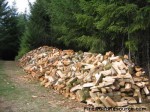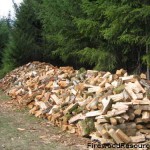Most of us appreciate wood that makes a nice bed of coals when it burns. But sometimes you can get too much of a good thing. I once had an EPA certified wood stove with a small firebox that had this problem. Sometimes a bed of slowly smoldering charcoal would build up so much that there wasn’t much room to put enough wood in to make a hot fire.
This was especially a problem during cold weather when I was going through a lot of wood 24 hours a day. The more wood I burned, the more charcoal would build up. This was also a bigger problem in cold weather because that is when I wanted to be able to put more wood in for a hotter fire. But with all the coals in the way, I had a problem and I didn’t want to let the fire die down enough to scoop the coals out because the house would get cold if I did.
EPA certified stoves are more likely to have this problem. This is because of the higher temperatures inside the firebox. This causes the more volatile and faster burning compounds to burn off quickly leaving more of the slower burning coals.
What I learned to do is to move the coals around so they would be right next to the air inlets inside the firebox. This stove had the airwash system that blew air over the door glass to keep it clean. So I would pull the coals up front as close to the door opening and piled as high as I could without the coals spilling out. Then put some small split pieces of softwood on top of the coals.
With the air blowing down on the coals and the fast burning wood on top, the coals would flare up and burn up. At least those in the direct airstream would. As they burned away I would keep pulling more into the airstream and repeating the process until the charcoal was down to a more acceptable level.

